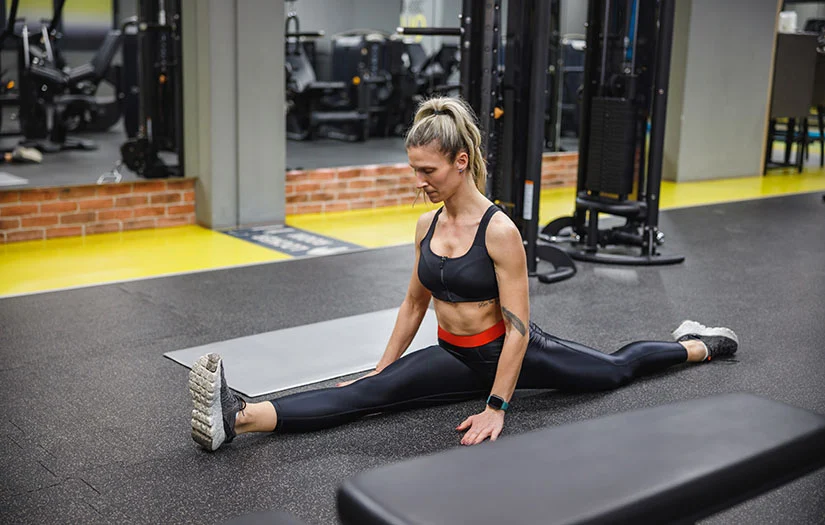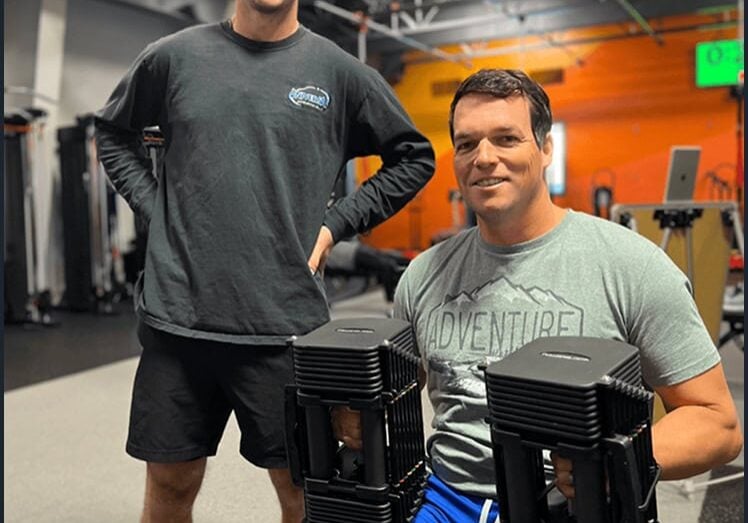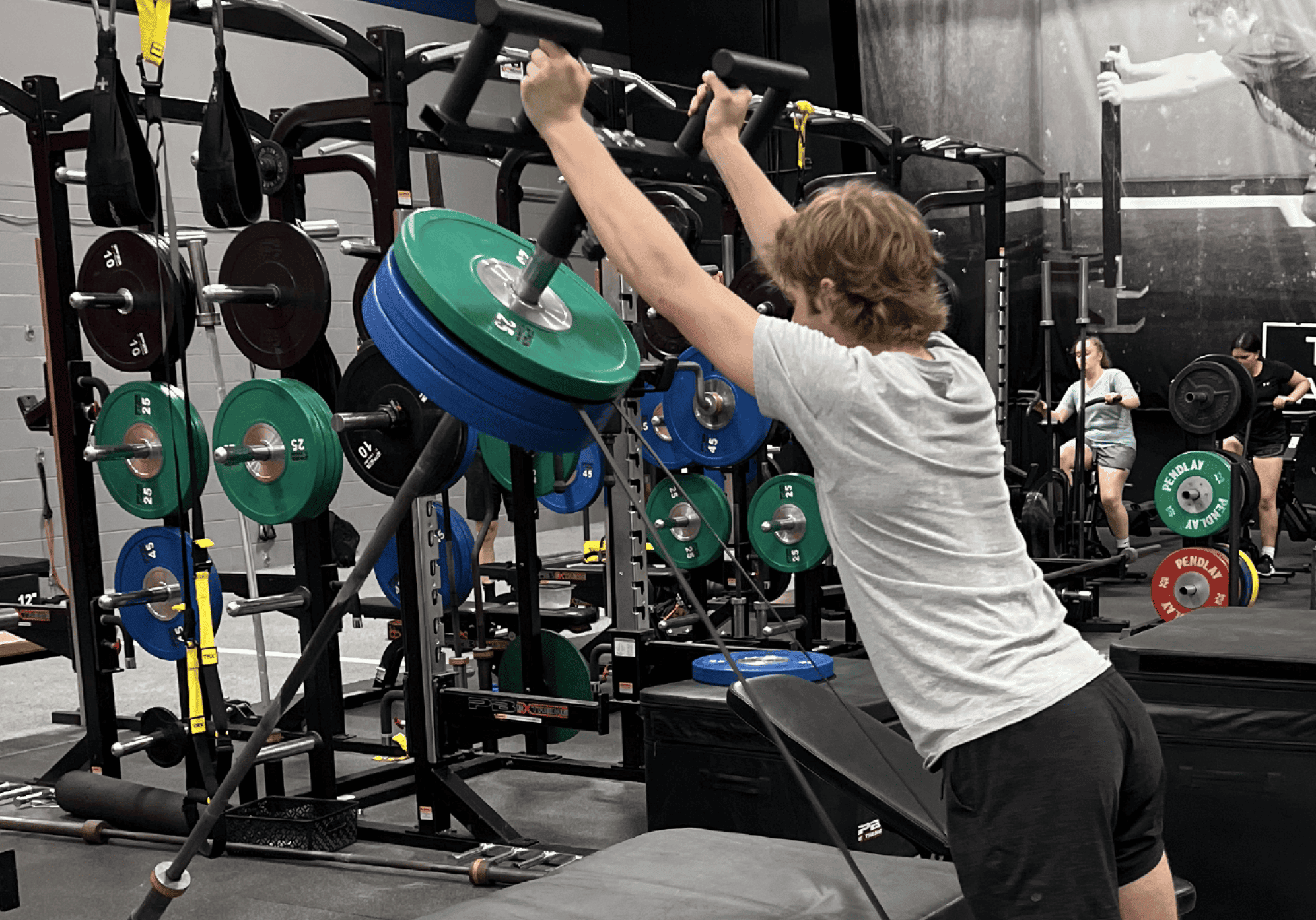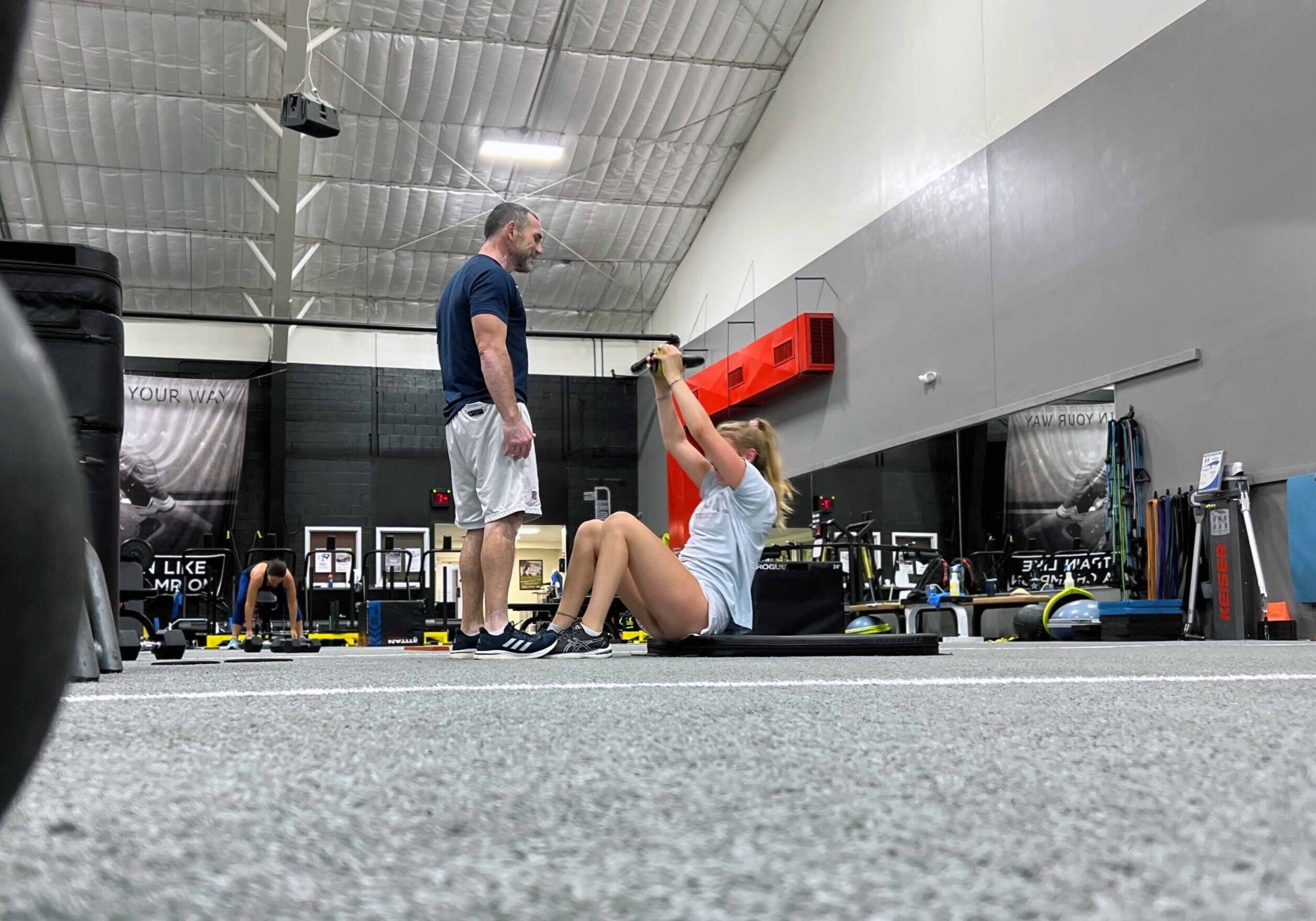
THE BENEFITS OF FLEXIBILITY: WHY YOU SHOULD STRETCH MORE!
Article by Nicole Golden, NASM
HOW DOES FLEXIBILITY RELATE TO FAULTY MOVEMENT PATTERNS?
A simple warm up or stretching protocol is insufficient to properly train flexibility. In fact, many studies seem to show that simple stretching prior to a workout has minimal effect on injury risk (Small et al., 2008). Rather, targeted flexibility training, based on the results of dynamic movement assessment, should be a component of all training programs. Equally, flexibility does not exclusively refer to flexibility in the muscles, but also in the connective tissue (i.e., tendons, ligaments, and fascia).
There is a complex relationship between the muscles and the neurological system. An individual decides they want to move at a joint. The brain sends a signal to the muscles that cross that joint to recruit motor units to fire, contract the muscle, and the joint moves.
However, that signal is variable. The muscle needed to complete the movement is referred to as the agonist, the opposing muscle the antagonist, and the helper muscles the synergists. If the antagonist is overactive, it will dim the signal to the agonist. Likewise, if the agonist is underactive, it is likely that a synergist muscle will be used to complete the movement instead of the agonist.
Dynamic movement assessments such as the overhead squat assessment (OHSA) will show a predictable movement pattern based on these impaired length tension relationships in muscle groups. It is not just a problem of correcting form and doing a few stretches but correcting the neurological signaling and muscle firing patterns to fire the right muscles at the right time to complete a movement (Atkinson et al., 2019).
High quality flexibility training programs include components of self-myofascial release (SMR), static and/or dynamic stretching (if warranted and safe). SMR dampens the neurological signal to the targeted muscle. Static stretching lengthens the muscle. Likewise, activation of opposing (and underactive) muscles is also key to improving movement patterns and optimizing flexibility.
The concept is relatively simple. Inhibit the overactive muscles via SMR. Lengthen the same muscles with static stretching though dynamic stretching is also acceptable if appropriate. Activate the underactive muscles via activation exercises. Integrate the underactive muscles into functional movement patterns (Clark et al., 2014).
OVERVIEW OF THE IMPORTANCE OF FLEXIBILITY
We usually associate muscle “tightness” with a decrease in flexibility. Tightness in a muscle group, oftentimes from overactivity of that muscle or muscle group, can lead to limited range of motion, dysfunctional muscle firing patterns, muscle imbalance, and sometimes, pain, injury, and disability. There are many studies that have determined that there is no evidence or limited evidence that flexibility training reduces pain and reduces the incidence of injury, however, it is important to note that most of these studies have only looked at one aspect of flexibility training in isolation.
Many of these studies have look at stretching or SMR in isolation. Likewise, the flexibility training interventions are general stretches or SMR protocols- not targeted based on any sort of assessment of the individual’s movement pattern (Ketenci, 2020; Witvrouw et al., 2004; Weldon & Hill, 2003).
Poor range of motion and inappropriate length tension relationships have a negative effect on neuromuscular efficiency (the ability of the nervous system to fire the right muscles at the right time in the right order). For example, let us consider the conventional deadlift. A primary joint action in the concentric phase of a deadlift is hip extension. The muscles that concentrically accelerate hip extension are the gluteus maximus, hamstrings (all three), and the adductor magnus.
However, the gluteus maximus should take the lion’s share of the load while the hamstrings and adductors should assist (Martín-Fuentes et al., 2020). Have you or a client done a heavy set of deadlifts only to find your hamstrings, but not glutes, extremely sore the day or two after? In this case, the hamstrings took the lion’s share of the load rather than the gluteus maximus.
This concept is called synergistic dominance (when the assistant muscle takes over for the prime mover). In this case, overactive or “tight” hamstrings will receive a stronger signal to fire than the glutes. This is where flexibility training, not simply cueing, is necessary for performing this exercise correctly.
The deadlift example only illustrates what is going on in every joint in the body. Altered length tension relationships leading to poor flexibility can cause the wrong muscles to be recruited for the wrong jobs. The result is often pain or injury. This is where flexibility training is not only helpful, but necessary for building optimal movement patterns.
UAC’s Personal Training staff can help to increase your flexibility.
PREVENTING INJURY
The human movement system is designed to function a specific way. Human beings evolved during a time where movements such as squatting through the full range, walking, carrying objects, pushing, pulling, and lifting objects from the ground were commonplace and frequent in daily lives. The musculoskeletal system developed to accommodate a lot of movement in all three planes of motion (sagittal, frontal, and transverse). Many of us no longer move all our joints through full ranges of motion or even use our most powerful muscles (i.e., the glutes) for their intended purpose (hip extension, not sitting).
This phenomenon sets us up for injury whether we are sedentary or train for sport via pattern overload (consistently repeated the same movement patterns) leading to injury, and then a cumulative injury cycle (one injury leading to another injury). This phenomenon is well illustrated in a recent study.
Koźlenia & Domaradzki (2021) recruited a group of 123 physically active adults to determine the risk of injury with low quality movement patterns. The researchers determined that even 1 cm of reduced range of motion increased injury risk by 6%. Previous injury was associated with a sixfold increase in injury risk.
Furthermore, study participants that demonstrated low quality movement patterns had a sevenfold increase in injury risk versus their counterparts with optimal movement patterns and greater flexibility.
MINIMIZING PAIN
Faulty movement patterns can often lead to pain. An excellent example lies in the most common complaint stemming from faulty movement patterns: low back pain. Low back pain is often complex and often caused by multiple factors.
However, it is common for individuals that suffer from low back pain to exhibit incorrect activation of abdominal muscles (especially the transverse abdominis), stiffness in the trunk in general, poor range of motion in the spine and hip joints, underactive hip extensors (i.e., the gluteals), incorrect muscle activation during sitting, standing, walking, and bending over (Laird et al., 2012). The faulty muscle activation patterns, stiffness, and limited range of motion can be addressed and corrected with flexibility training. This is true of other orthopedic conditions such as runner’s knee, planar fasciitis, etc.
SPORTS/FITNESS PERFORMANCE
Training for optimal movement patterns is critical for sports performance as it is common for athletes to develop pattern overloads, limited range of motion in specific joints, and underactivity in certain muscles. This can lead to injury and lost playing time. SMR and dynamic stretching is recommended in phase 5 of the OPT™ model which is associated with training for athletic performance.
Dynamic stretches can also be thought of as movement preparation for the training to come and should not be skipped. Although these benefits fall under the category of minimizing risk of injury, which is important for sports performance, what is the role of flexibility training in improving markers of performance?
Hadjicharalambous et al. (2016) studied a group of young soccer players to determine the affects of targeted static stretching on soccer performance. The study authors determined that targeted static stretching completed before and after each training session, improved markers of flexibility, speed, agility, and explosiveness in these players.
Polsgrove et al. (2016) investigated the effects of a 10-week yoga program on sports performance in male collegiate athletes. The authors determined that the athletes that participated in the yoga program demonstrated higher flexibility and balance scores. The study authors inferred that these skills would enhance sports performance as many sports require these skills.
UAC’s Sports Performance staff can teach you to optimize your training and avoid injury.
CONCLUSION
Flexibility refers to the ability of the muscles and connective tissues to functional optimally so that a joint may reach its full range of motion. Flexibility training is more than simply stretching before and after a workout.
Rather, it should be a targeted program with the goal of optimizing movement patterns based on the individual needs of a client or athlete. Optimizing movement patterns is the key to reducing the risk of injury, minimizing pain, and enhancing performance in sports and fitness endeavors.
REFERENCES
Atkinson, D. A., Mendez, L., Goodrich, N., Aslan, S. C., Ugiliweneza, B., & Behrman, A. L. (2019). Muscle Activation Patterns During Movement Attempts in Children With Acquired Spinal Cord Injury: Neurophysiological Assessment of Residual Motor Function Below the Level of Lesion. Frontiers in Neurology, 10. https://doi.org/10.3389/fneur.2019.01295




